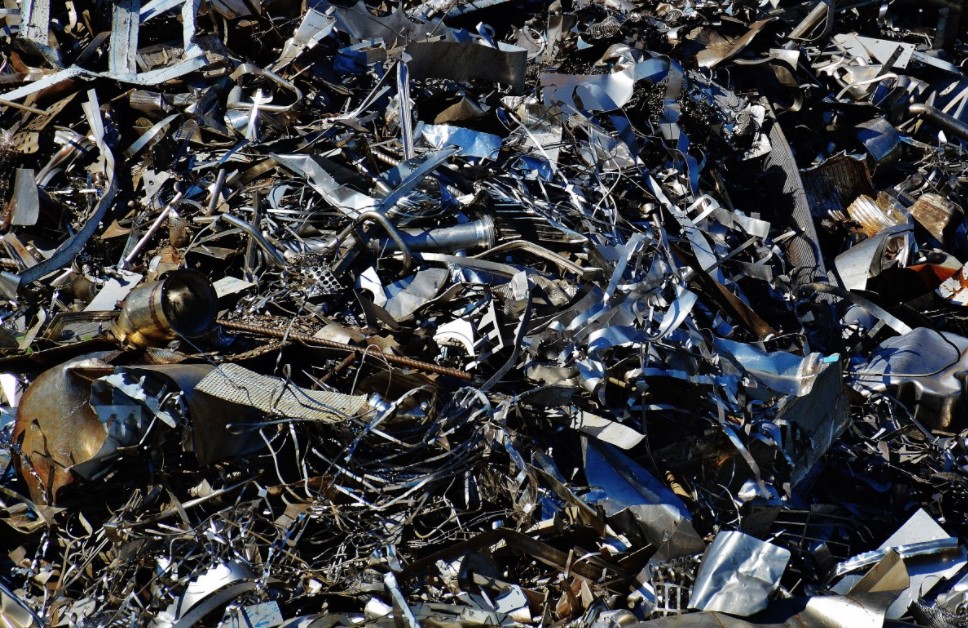Ferrous
Contents |
[edit] Introduction
The term ferrous refers to metal compounds that contain iron. Iron is the chemical element most commonly found on Earth by mass, forming much of the Earth’s outer and inner core.
For more information, see Iron.
Ferruginous is a term related to ferrous. It is an adjective that is sometimes used to describe non-metallic substances (such as water and oil) that contain iron or have rust on their surface.
[edit] Types of ferrous metals
Ferrous metals are generally thought of as alloys because they are essentially iron ore with the addition of various amounts of a wide range of other substances. These combinations produce a variety of materials with different properties that can be used for a range of purposes.
The combination of iron ore with carbon produces substances referred to as non-alloy steels. In addition to wrought iron, these non-alloy steels include cast iron and low (or mild), medium and high carbon (or tensile) steel. Non-alloy steels generally have good thermal and electrical conductivity.
| Non-alloy steels | Characteristics | Common applications |
| Cast iron | Brittle (if thin); castable (in a mould); good compression strength; poor corrosion resistance. |
Bench vices. |
| Low-carbon (or mild) steel | Tough; easy to form, braze and weld; poor corrosion resistance. | Nuts, bolts, screws. |
| High-carbon steel | Hard but brittle; harder to work with than mild steel. | Taps and tools. |
Other common iron ore additions include:
[edit] Characteristics and uses of ferrous metals
Most ferrous metals exhibit similar basic properties and have been used in a wide variety of applications. Common characteristics include:
- Durability
- Good tensile strength
- Good electrical conductivity
- Low corrosion resistance
- Silver in colour
- Recyclable
- Usually magnetic.
[edit] Advantages and disadvantages
Some of the shared characteristics of ferrous metals produce distinct advantages and disadvantages:
[edit] Disadvantages
- Inherent vulnerability to corrosion (and rust, in particular).
- Relatively high density.
[edit] Advantages
- Can be made less susceptible to corrosion through the addition of other elements or procedures.
- Generally considered to be inexpensive.
- Inherently strong (with the ability to be made even stronger through various processes).
- Relatively high temperature and endurance limitations.
See also: Non-ferrous metals.
[edit] Related articles on Designing Buildings
Featured articles and news
RTPI leader to become new CIOB Chief Executive Officer
Dr Victoria Hills MRTPI, FICE to take over after Caroline Gumble’s departure.
Social and affordable housing, a long term plan for delivery
The “Delivering a Decade of Renewal for Social and Affordable Housing” strategy sets out future path.
A change to adoptive architecture
Effects of global weather warming on architectural detailing, material choice and human interaction.
The proposed publicly owned and backed subsidiary of Homes England, to facilitate new homes.
How big is the problem and what can we do to mitigate the effects?
Overheating guidance and tools for building designers
A number of cool guides to help with the heat.
The UK's Modern Industrial Strategy: A 10 year plan
Previous consultation criticism, current key elements and general support with some persisting reservations.
Building Safety Regulator reforms
New roles, new staff and a new fast track service pave the way for a single construction regulator.
Architectural Technologist CPDs and Communications
CIAT CPD… and how you can do it!
Cooling centres and cool spaces
Managing extreme heat in cities by directing the public to places for heat stress relief and water sources.
Winter gardens: A brief history and warm variations
Extending the season with glass in different forms and terms.
Restoring Great Yarmouth's Winter Gardens
Transforming one of the least sustainable constructions imaginable.
Construction Skills Mission Board launch sector drive
Newly formed government and industry collaboration set strategy for recruiting an additional 100,000 construction workers a year.
New Architects Code comes into effect in September 2025
ARB Architects Code of Conduct and Practice available with ongoing consultation regarding guidance.
Welsh Skills Body (Medr) launches ambitious plan
The new skills body brings together funding and regulation of tertiary education and research for the devolved nation.
Paul Gandy FCIOB announced as next CIOB President
Former Tilbury Douglas CEO takes helm.
UK Infrastructure: A 10 Year Strategy. In brief with reactions
With the National Infrastructure and Service Transformation Authority (NISTA).























